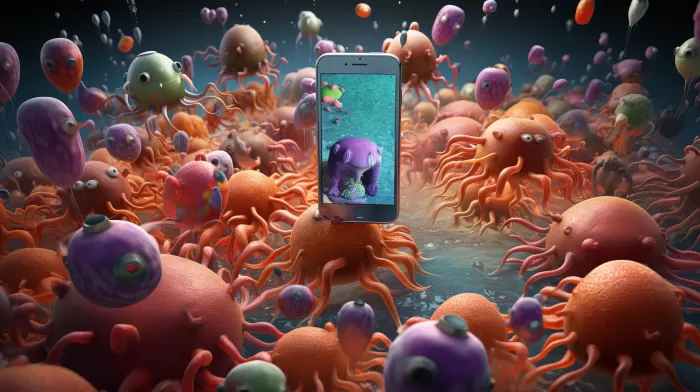If you’ve visited someone in the hospital recently, it’s time to clean your cellphone. Research shows that cellphones are teeming with various pathogens and antibiotic-resistant bacteria. Surprisingly, this microscopic nightmare isn’t limited to the phones of healthcare workers but is also found on the phones of patients and their visitors.
The Hidden Dangers on Your Cellphone
You probably didn’t expect that something you carry around daily could be home to so many harmful bacteria. Most people take their phones everywhere with them, including to the hospital when visiting friends or family. Unfortunately, this means that you’re also bringing home the various germs you unknowingly pick up during your visit.
Research reveals that the types of bacteria found on patients’ phones and their resistance patterns are very worrisome. While it’s known that cellphones of medical personnel can be a potential source of bacterial pathogens in a hospital setting, recent findings suggest that mobile phones of patients, patients’ companions, and visitors represent an even higher risk for pathogen colonization.
The Impact on Hospital Patients
The infections caused by the microorganisms found on cellphones have a significant impact on hospital patients. In the United States, more than one in four hospital patients are affected by these infections, leading to a staggering 1.7 million infections annually. These infections are linked to approximately 100,000 deaths each year. Shockingly, an estimated one-third of these infections could be prevented by adhering to standard infection control guidelines.
Preventing the Spread of Bacteria
To protect yourself and others from these harmful bacteria, it’s crucial to take precautions, especially when visiting a hospital. Here are five simple steps you can take to reduce the spread of nasty bugs hiding on your cellphone:
- Clean Your Cellphone Regularly: Wipe down your cellphone daily with an alcohol-based sanitizer or disinfecting wipes to keep it germ-free. Pay special attention to the case and screen, and ensure your phone is switched off while being cleaned. Mayo Clinic suggests using a soft, slightly damp, lint-free cloth to ensure that you don’t damage the device.
- Wash Your Hands Frequently: Soap and water are your best friends in preventing the spread of germs and bacteria. Wash your hands thoroughly and regularly, especially after touching surfaces in public places and before eating or preparing food. Remember to lather up for at least 20 seconds and dry your hands properly afterward.
-
Avoid Using Your Phone in Public Restrooms: Restrooms are breeding grounds for bacteria, and bringing your cellphone into these spaces increases the risk of contamination. Keep your phone out of sight and focus on keeping your hands clean. Wait until you’ve finished washing your hands before touching your phone again.
-
Practice Social Distancing: While it may be tempting to show your friends a funny video or photo on your phone, it’s best to avoid sharing your device with others whenever possible. This practice reduces the chances of spreading germs and bacteria between individuals.
-
Consider Infection Control Measures: If you work in a hospital or visit someone frequently, look into the available infection control guidelines and adhere to them strictly. This investment could potentially save thousands of lives each year.
In Conclusion
Cellphones carry a shocking array of harmful bacteria, proving a significant risk to hospital patients and the general public alike. Frequently cleaning your phone, washing your hands, avoiding using your device in public restrooms, practicing social distancing, and following infection control measures can help combat the spread of these dangerous bugs. Stay vigilant and protect yourself and others from the unseen dangers lurking on your cellphone.



